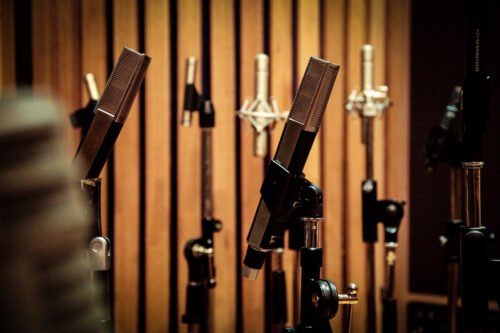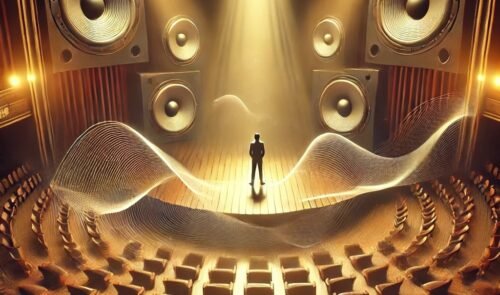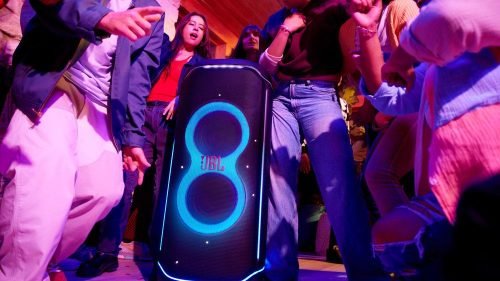What It Really Does, and What Might Be Going On Behind the Scenes
If you’ve been checking out JBL’s newest portable speakers or party powerhouses, you’ve probably noticed a new buzzword creeping into their spec sheets – AI Sound Boost. It sounds impressive, right? But what exactly does it do? Is it just another marketing term, or is there real tech behind it?
Well, based on everything JBL’s shared so far – and digging into how audio processing usually works – there’s actually quite a bit going on here. Let’s break it down.
Key Takeaways:
- Real-time optimization boosts loudness, clarity, and bass while reducing distortion.
- Keeps JBL speakers sounding powerful and clean, even at high volumes.
- Optimizes sound in real time; doesn’t learn preferences or adapt over time.
- Similar to Sony’s tech but focuses more on loudness and real-time performance.
- Delivers fuller sound and stronger bass without sacrificing audio quality.
What We Know for Sure: The Core of AI Sound Boost
At its heart, AI Sound Boost is all about real-time audio optimization. JBL designed it to analyze the audio signal as it’s playing and then adjust the speaker’s output on the fly. No static EQ preset here – this thing is working constantly in the background.
Here’s what JBL explicitly says the technology does:
- Real-time analysis of the audio signal: The speaker’s internal system keeps monitoring what’s coming through.
- Predictive modeling of speaker behavior: JBL says the AI predicts how the loudspeaker drivers will respond to that signal, especially when it comes to power output and cone movement.
- Dynamic optimization: Based on that prediction, the system adjusts the audio output in real-time, essentially pushing the speaker as far as it can safely go.
- Maximizing the speaker’s potential: The whole idea is to use every bit of the speaker’s power and dynamic range without crossing into distortion territory.
- Cleaner sound, even at high volumes: One of the most noticeable effects is reduced distortion when you crank the volume.
- Enhanced bass response: JBL’s AI Sound Boost also helps squeeze out deeper, punchier bass without overwhelming the mids and highs.
That’s the core functionality, and it’s not just fluff. If you’ve heard any of JBL’s newer models – like the PartyBox Club 120, PartyBox 520, Xtreme 4, Flip 7, or Charge 6 – you’ve probably already noticed they sound fuller and handle loud volumes better than older models.
Where It Shows Up
JBL’s rolling out AI Sound Boost across a good chunk of their latest lineup:
- Party speakers: PartyBox Club 120, PartyBox 520, Encore, Encore 2
- Portable speakers: Xtreme 4, Flip 7, Charge 6
That’s not a coincidence – these are all speakers where loudness and bass really matter. AI Sound Boost is designed to help them punch above their weight.
What We’re Assuming (Based on How This Stuff Usually Works)
Now, JBL hasn’t spilled every technical detail – no surprise there. But here’s what’s likely happening behind the scenes, based on what we know about audio processing in general and what other companies are doing.
- It’s basically a smart, adaptive DSP (Digital Signal Processor): When JBL says “AI,” it probably means the system uses algorithms that predict driver behavior and adapt the sound accordingly. Think of it like the speaker “knowing” how far it can push the bass without causing the drivers to distort or clip.
- Dynamic power management is likely baked in: The system probably monitors how much power the amp’s pulling and adjusts the output to prevent overdriving the speaker – especially helpful for battery-powered models.
- It might favor certain audio elements: While JBL doesn’t confirm this, it wouldn’t be surprising if the AI prioritizes vocals or lead instruments when the mix gets busy, keeping things clear even when a lot is going on.
But let’s be clear – that’s me connecting the dots. JBL’s not marketing this as a full-on “AI that learns your preferences” system. It’s not doing voice recognition or adapting to your taste over time. This is all about live audio optimization, not long-term personalization.
How Does This Compare to What Others Are Doing?
Now, JBL’s not the only one playing in this space. If you’ve used a Sony portable speaker recently, you’ve seen similar ideas – just under different names.
For example, Sony’s got DSEE (Digital Sound Enhancement Engine) in several of their models. It’s not identical, but the concept’s related. DSEE focuses on restoring high-frequency detail lost in compressed music files – making your Spotify tracks sound a bit more like the original studio version. And on their bigger X-series speakers, Sony leans on “X-Balanced Speaker Units” – a tech that allows the drivers to move more air without distortion, which gives you bigger bass and cleaner sound at high volumes.
The common thread? Both brands are leaning hard into smart audio processing to get more sound – and better sound – out of speakers that are still, at the end of the day, limited by their size.
That said, JBL’s AI Sound Boost seems a little more focused on real-time performance. It’s less about restoring lost details (like Sony’s DSEE) and more about squeezing every drop of power from the speaker, adjusting dynamically to whatever track you’re playing.
Why AI Sound Boost Actually Matters
If you’ve used portable Bluetooth speakers before, you know the usual pain points: crank up the volume, and the sound gets muddy, the bass disappears, or things start to crackle. AI Sound Boost tackles that head-on.
- You get more consistent sound quality, even when you turn it up.
- Bass stays punchy, without that hollow, boomy mess you sometimes hear in smaller speakers.
- Less distortion means you’re not wincing through your favorite songs at top volume.
Honestly, it makes these new JBL models feel like they’re operating above their size. That’s a pretty big win for something you’re likely tossing in a bag or hauling to a backyard party.
What It’s Not
Just so we’re clear – AI Sound Boost isn’t magic. It’s not going to turn your Flip 7 into a full-blown PA system. Physics still matter. Small drivers are small drivers. What it does is squeeze every bit of performance possible out of the hardware.
And no, it’s not learning your music taste or adapting over time like some smart assistants do. It’s doing its job in the moment, based on the audio signal – not your playlists.
And no, it’s not learning your music taste or adapting over time like some smart assistants do. It’s doing its job in the moment, based on the audio signal – not your playlists.
The Bottom Line
So, is JBL’s AI Sound Boost worth caring about? Honestly – yeah. It’s one of those rare cases where the tech does what it promises: lets you crank your music and still enjoy it. Your playlist sounds bigger, bassier, and cleaner – even when you push the volume.
And compared to what Sony’s doing, JBL’s leaning more into that real-time loudness and driver optimization angle, while Sony’s focused a bit more on detail restoration and driver design. Both approaches aim to overcome the same problem – getting massive sound from a portable speaker – but they’re attacking it from slightly different directions.
If you’re shopping for a new speaker and wondering what makes these new JBL models sound better, AI Sound Boost is a big part of it. It’s not just a buzzword – it’s actually helping these things punch way above their size.





